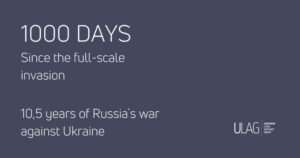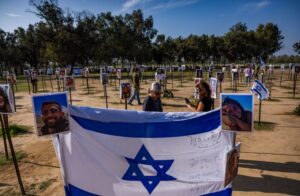NAGASAKI — Membership is falling or showing no sign of rising at 13 of 16 major organizations for Japan’s second-generation hibakusha — the children of people directly affected by the U.S. atomic bombings of Japan during World War II — investigations by the Mainichi Shimbun have revealed.
While 76 years have passed since the atomic bombs were dropped, people still feel they can’t come forward to identify themselves as second-generation hibakusha for fear of discrimination and prejudice — a fact that has contributed to stagnation of the groups.
The term “second-generation hibakusha” refers to children of A-bomb survivors excluding those who were in the womb at the time of the bombing. The Japanese Liaison Council of Second-Generation Atomic Bomb Survivors estimates there are between 300,000 and 500,000 such people in Japan, but membership at the 16 major groups only amounts to around 1,000 people.
It appears many second-generation hibakusha feel unable to come forward due to concerns of discrimination and prejudice, while the government doesn’t have accurate numbers. Although many second-generation hibakusha are anxious about their health, the national government “currently doesn’t recognize” any genetic effects from atomic bomb radiation for them, which means that they are not eligible to receive provisions under the Atomic Bomb Survivors’ Assistance Act.
When the Mainichi Shimbun spoke to 15 organizations affiliated with the Japan Confederation of A-and H-bomb Sufferers Organizations (Hidankyo) and one group in Nagasaki that isn’t affiliated, it found that membership had fallen remarkably among Nagasaki and Kagoshima prefectures’ second-generation hibakusha groups. The roughly 100-strong membership the Nagasaki group had a few years ago had fallen to 65, while in Kagoshima, the membership of approximately 170 people in around 2014 had tumbled to about 100. The second-generation hibakusha group in Ishikawa Prefecture has decided to dissolve at the end of this fiscal year.
Although members of the Nagasaki group participated in the International Signature Campaign in Support of the Appeal of the Hibakusha for the Elimination of Nuclear Weapons and a Nagasaki city initiative to pass on hibakusha testimonies among families and others, the group’s deputy director Naoko Sato said, “Interest doesn’t go beyond a concentration of people in their 50s to 70s.”
At the Nagasaki second-generation hibakusha group, which is not affiliated with Hidankyo, efforts centering on its 73-year-old head Ikuro Maruo to tell life stories have begun, but this hasn’t led to more members joining. The second-generation hibakusha group in Hiroshima Prefecture, too, has been engaging in activities including filming testimonies, but membership is flatlining at about 100 people. What is clear is that second-generation groups in the areas where the bombs were dropped are struggling to find new members.
Maruo described the prejudice directed at second-generation hibakusha: “Second-generation people have been facing discrimination in a number of areas including finding work or a marriage partner as they are said to “get sick easily,” among other things. It’s not easy to identify as one and join a group for them.”
Maruo’s mother was a hibakusha. His involvement in unions at work sparked his hibakusha protection activism, and despite many around him keeping their mouths shut, he continued to listen to hibakusha experiences and make other efforts.
In his 50s, the second-generation hibakusha and their families who he had campaigned with began dying one by one. In 2018, he was diagnosed with pancreatic cancer, and it returned in 2020. He has been told it is untreatable. He now strongly believes that there is no getting past the thought that the effects of radiation reached the second generation.
With the number of surviving hibakusha dwindling and many entrusting their memories to the next generation, there are numerous members of the second generation who cannot speak out as they wish to due to deep-rooted discrimination, prejudice and concerns about their own health. In Maruo’s group, there are quite a few members who campaign anonymously and refuse to take up senior positions because it would require them to publicly reveal their actual names. Furthermore, the group is feeling the effect of second-generation members getting older. “Future activism may have to be pared down,” he said with clear concern.
At the country’s largest group, the Tokyo second-generation hibakusha group also known as Orizuru no Ko (roughly translating to children of the origami crane), many of its 146 members take part while remaining under pressure from commitments including work and caring for their parents. Individual members’ contributions are consequently limited. On top of this, the coronavirus pandemic has cast a shadow on their efforts, and since 2020, their activism is reported to have primarily taken place online. The group’s head told the Mainichi Shimbun: “Exchanges between members and hibakusha have declined, too.”
What should these groups do about the future? Maruo said, “If government support for second-generation hibakusha can become a reality, it will give momentum to activism.” He added: “There are almost no hibakusha whose activism started immediately after the bombs were dropped. With the establishment of the Atomic Bomb Survivors’ Assistance Act, and their livelihoods guaranteed, more and more people were able to come forward and say ‘I am also a hibakusha.'”
Currently, second-generation hibakusha are not subject to the Atomic Bomb Survivors’ Assistance Act. They are able to receive subsidized health checks only once a year, and awareness of this system is also inadequate. As a result, only a small portion of those eligible use it.
In spite of this overall trend, membership is actually rising in some areas. The Kanagawa-Prefecture based group for third- and second-generation hibakusha — which has about 130 members — and the Hyogo-Prefecture based second-generation group — with 104 members — have seen an upward trend in membership.
In both groups, their advertisements are enclosed with introductory materials on municipal-government run health checks for second-generation hibakusha. In a good year, the Kanagawa group sees its membership rise by some 10 people, while in 2019 and 2020 the Hyogo group’s membership has reportedly risen by about 40 people in total.
Maruo urged: “First, we need more people to receive the medical checks. If this can be done, we will be able to show the national government how many second-generation hibakusha are looking to receive assistance.”
(Japanese original by Atsuki Nakayama, Nagasaki Bureau)




